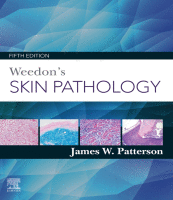Physical Address
304 North Cardinal St.
Dorchester Center, MA 02124

Introduction Collagen is the major structural constituent of mammalian connective tissues. It accounts for well over 70% of the dry weight of the skin. There are at least 10 genetically distinct types of collagen, and it is the relative content…

Introduction This chapter deals with the various disorders of cutaneous pigmentation, excluding those entities in which there is an obvious lentiginous proliferation of melanocytes in sections stained with hematoxylin and eosin (H&E); it also excludes tumors of the nevus cell–melanocyte…

Introduction This chapter deals with a heterogeneous group of diseases in which an abnormality of maturation, of keratinization, or of structural integrity of the epidermis is present. Many advances have been made in the past decade in our understanding of…

Introduction Cutaneous blood supply The skin is supplied by small segmental arteries that may reach the skin directly or after supplying the underlying muscle and soft tissues en route. These vessels branch to supply the subcutis with a meshwork of…

Introduction The granulomatous reaction pattern is defined as a distinctive inflammatory pattern characterized by the presence of granulomas. Granulomas are relatively discrete collections of histiocytes or epithelioid histiocytes with variable numbers of admixed multinucleate giant cells of varying types and…

Introduction The vesiculobullous reaction pattern is characterized by the presence of vesicles or bullae at any level within the epidermis or at the dermoepidermal junction. Pustules, which are vesicles or bullae containing numerous neutrophils or eosinophils, are included in this…

Introduction The spongiotic tissue reaction is characterized by the presence of intraepidermal and intercellular edema (spongiosis) ( Fig. 6.1 ). It is recognized by the widened intercellular spaces between keratinocytes, with elongation of the intercellular bridges ( Fig. 6.2 ).…

Introduction The psoriasiform reaction pattern is defined morphologically as the presence of epidermal hyperplasia with elongation of the rete ridges in a regular manner. This definition encompasses a heterogeneous group of dermatological conditions. This morphological concept is much broader than…

Introduction The lichenoid reaction pattern (lichenoid tissue reaction, interface dermatitis) is characterized histologically by epidermal basal cell damage. This takes the form of cell death and/or vacuolar change (liquefaction degeneration). The cell death usually involves only scattered cells in the…

In the previous chapter, an orderly approach to the diagnosis of inflammatory skin lesions was discussed. This chapter records in list form some useful points that may assist in reaching a correct diagnosis. Many of the clues that follow produce…